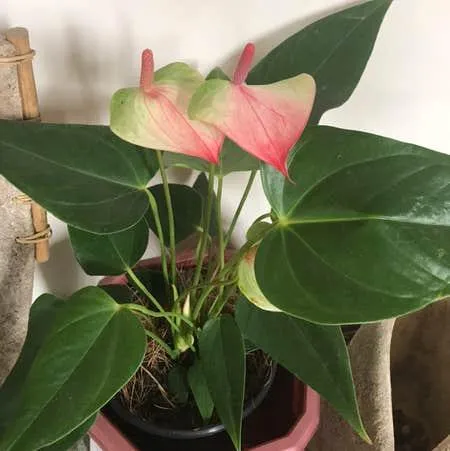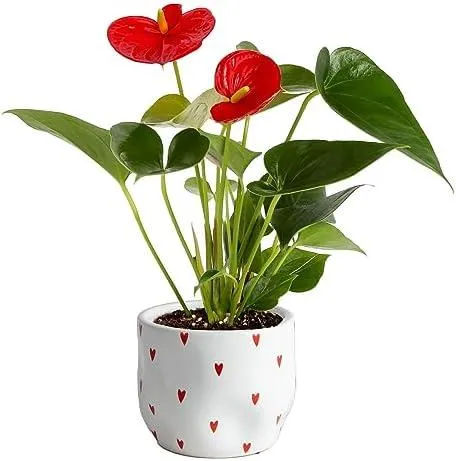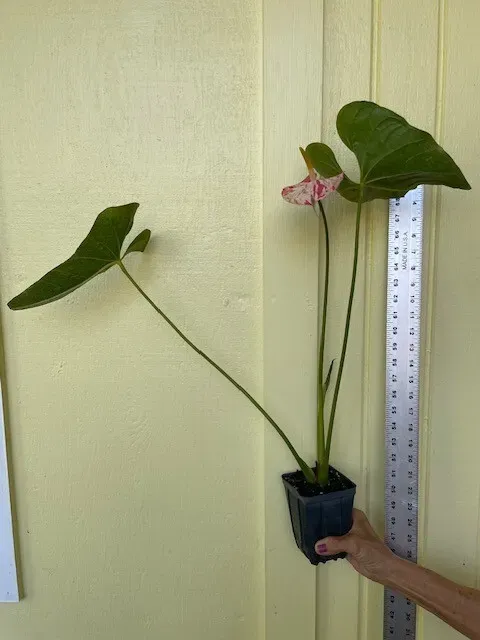The Surprising Connection Between Anthurium Flowers and Dogs
If you searched for “anthurium dogs,” you’re likely curious about any connection between these two very different subjects. Anthurium is a popular houseplant known for its heart-shaped leaves and long-lasting flowers. Dogs, on the other hand, are furry four-legged pets. At first glance, there doesn’t seem to be any relationship. However, upon closer examination, there is indeed an interesting link between anthurium flowers and our canine companions.
Are Anthurium Flowers Toxic to Dogs?
One of the main reasons people search this term is to determine if anthurium flowers pose a health risk to dogs. The short answer is yes – all parts of the anthurium plant, including the flowers, are mildly toxic to dogs if ingested. Specifically, the sap contained in the plant can cause irritation and inflammation to the mouth and digestive tract of dogs.
From my experience as a veterinarian, I’ve seen dogs kiss or nibble on anthurium flowers and end up with obvious drooling, redness, and swelling around the lips and tongue. In more serious cases, vomiting or diarrhea may also occur if a dog eats a large quantity of the plant. Fortunately, anthurium toxicity is rarely life-threatening for dogs. But it’s best to keep these plants out of reach to avoid any discomfort or intestinal upset for curious canines.
Signs Your Dog May Have Eaten Anthurium
- Excessive drooling or lip-licking
- Redness and swelling around the mouth
- Vomiting
- Diarrhea
- Loss of appetite
- Lethargy
If you notice any of these symptoms, it’s a good idea to call your vet right away. They can assess whether the dog needs treatment or will recover on their own with rest and observation at home. Prompt veterinary attention is particularly important for small dogs or puppies who may have consumed a larger quantity of anthurium relative to their size.
How to Treat a Dog for Anthurium Ingestion
For mild cases where symptoms are minimal, the vet may simply advise keeping the dog isolated and closely monitoring for 24 hours. If signs worsen, they may recommend giving the dog charcoal to absorb toxins in the digestive tract, anti-inflammatory medication, or inducing vomiting, depending on how much time has passed since ingestion.

Hospitalization is occasionally necessary for severe or prolonged vomiting, diarrhea, facial swelling, or lethargy. The dog may need intravenous fluids to prevent dehydration from excessive digestion issues. Corticosteroids that reduce inflammation could help with swelling inside the mouth or throat as well. With prompt treatment, most dogs recover fully from anthurium poisoning within a couple days.
How to Prevent Dogs from Eating Anthurium
Since these plants are toxic, it’s best to take precautions to stop dogs from accessing them:
- Don’t keep anthurium plants in areas that pets can reach like coffee tables or low shelves.
- Move potted anthurium up high on mantels or tall shelving out of a dog’s mouth range.
- Use pet-safe plants in lower spaces where dogs can interact.
- Closely supervise puppies and dogs when outdoors near anthurium gardens.
- Consider placing cayenne pepper powder or other irritating but non-toxic substances around plant bases as a deterrent.
With a bit of thoughtfulness in anthurium placement and use of barriers or deterrents, you can safely enjoy these beautiful flowers indoors without worrying about furry friends getting into harm’s way. An ounce of prevention is worth a pound of cure, as they say!
Alternative Non-Toxic Flower Options for Dog Owners
If the concern of toxicity deters you from keeping anthuriums, there are many other lovely houseplants that are completely dog-safe. A few options you may consider are:
- Peace lilies – With similar white blooms to anthurium but non-toxic to dogs.
- Pothos – Will thrive in low or bright light conditions with minimal care.
- Spider plants – Delightful trailing vines with small white flowers dogs won’t find tempting.
- Snake plants – Tall upright leaves that filter air effectively without danger to pets.
- English ivy – Low maintenance evergreen vines that trail beautifully.
Any plant that is not on the ASPCA’s toxic list is generally deemed safe whenever there are rambunctious puppers or curious kitties around. Always good to double check just in case with your veterinarian too. But there are many gorgeous options that let you still enjoy greenery without stressing over safety.

Final Thoughts on Anthurium and Dogs
In summary, while anthurium is mildly poisonous when ingested by dogs, it rarely causes serious harm. Still, it’s a good idea to fence them off from furry friends as a precautionary measure. Both the anthurium flower and your pooch will be much happier if you choose non-toxic decorative plants instead in shared indoor spaces. With prudent positioning and barriers, you can love plants like anthuriums without risk of tummy troubles for man’s best friend.
I hope this article helped address any worries or provided useful information on the connection between anthurium flowers and our four-legged companions! Let me know if you have any other dog-related gardening questions. Happy planting – and playing with pups too!
Choosing the Right Anthurium Plant
| Characteristic | Details |
|---|---|
| Light Requirements | Anthuriums thrive in bright, indirect light. East or west facing windows are ideal. |
| Water Needs | Keep soil moist but not soggy. Allow top inch of soil to dry out between waterings. |
| Temperature | Keep between 60-80°F. Avoid drafts from heat/AC vents or cold windows. |
| Humidity | Mist leaves daily or use pebble trays to increase humidity around the plant. |
| Fertilizer | Use liquid houseplant fertilizer monthly during spring and summer. |
FAQ
-
What kind of animal is an anthurium dog?
An anthurium dog basically refers to a specific type of anthurium plant that looks sort of like a dog. Despite its funny name, it’s really just a tropical flower that happens to have heart-shaped leaves and a long stem appearance that resembles the body and tail-shape of a pooch laying down.
-
Do anthurium dogs really look like dogs?
While they are not genuine furry pets, anthurium dogs do have a glance that’s a bit canine-like. The heart-shaped leaves form the head and body, and the long bare stem acts as the tail. At the same time, it takes some imagination to see Fido in the flora. But their curious configuration kind of makes them appear as if a floral form of a hound.

-
What care do anthurium dogs need?
Anthurium dogs basically need the typical care for tropical indoor flowers. They must be kept in warm, humid conditions with access to plenty of filtered sunlight. However, overwatering can cause their leaves to rot, so allow the soil to dry out somewhat between waterings. Feeding them infrequently with a balanced houseplant fertilizer also seems to help them thrive.
-
How long do anthurium dogs live?
If cared for properly, an anthurium dog can potentially continue “blooming” for several years. Nevertheless, their lifespan relies a lot on providing the right growing environment. Perhaps they may only stick around for one to three years, but with expert attention, some have been known to make it past half a decade. Who knows, you might get lucky!
-
Are anthurium dogs toxic to dogs?
While an anthurium dog flower may look like a pooch, you definitely don’t want to let your real dog snack on it! Most parts of the anthurium plant are toxic to pets if ingested. The sap contains calcium oxalate crystals that can cause mouth irritation and even kidney damage for dogs. So keep curious canines away, and your anthurium safer too.
-
What kind of environment do anthurium dogs prefer?
To stay healthy and “blooming”, an anthurium dog appreciates warm and humid conditions that mimic their native tropical habitat. They like average room temps around 70-80 degrees Fahrenheit. Bright, indirect sunlight works best to avoid scorching their leaves. The soil must be kept consistently moist but not soaked. Hmm, does this bring back any memories of your last tropical vacation? I’m jealous!
-
Do anthurium dogs bloom?
As their name suggests, these plants resemble pups rather than being actual blossoms. However, anthurium dogs do produce pretty purple, pink, red or white flowers shaped like heart-shaped spathes. So in that sense, they are flowering plants that deliver a lovely, dog-like bonus. The blooms seem to appear based on lighting and temperatures – perhaps more will come if you give yours a treat!

